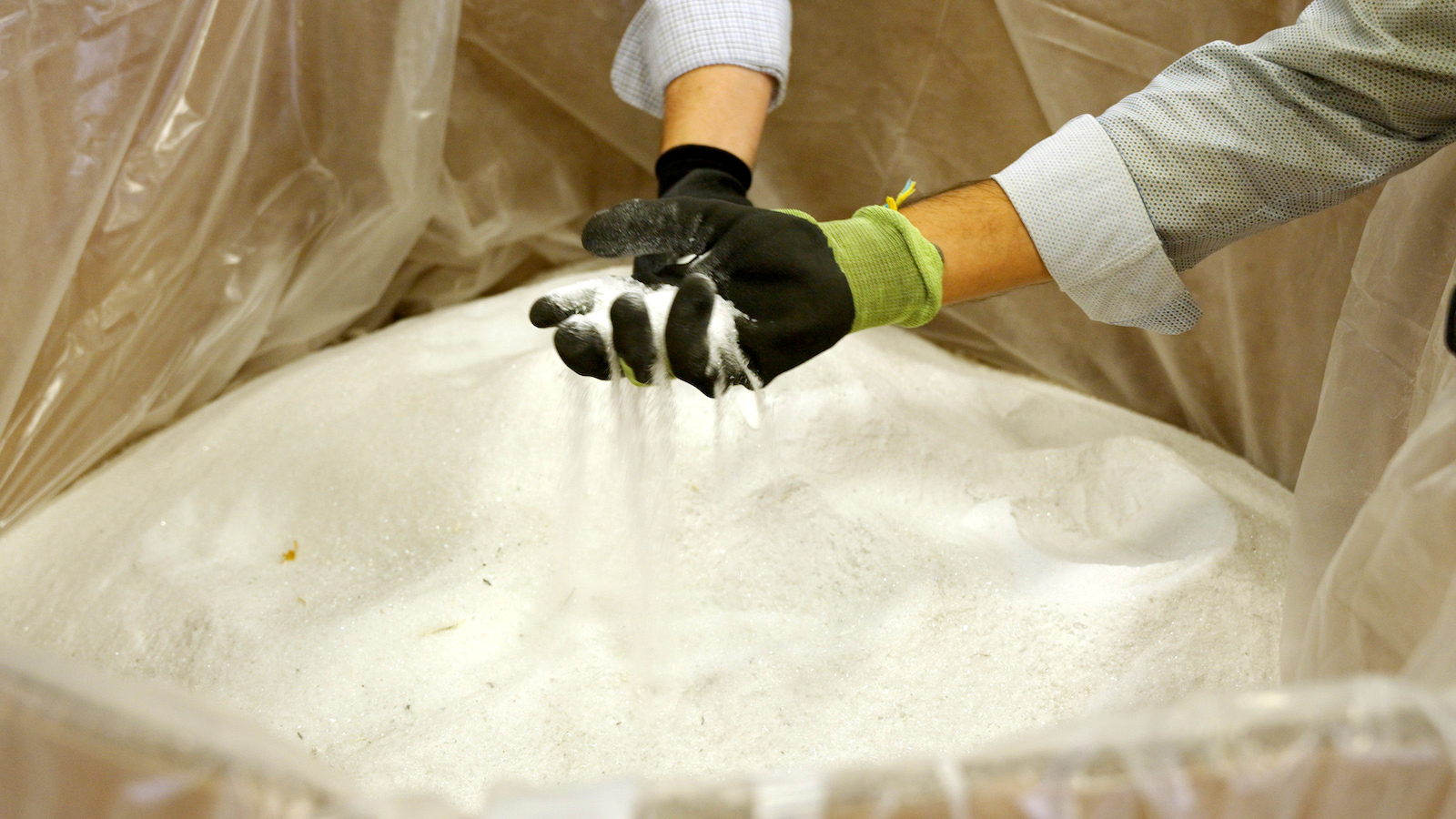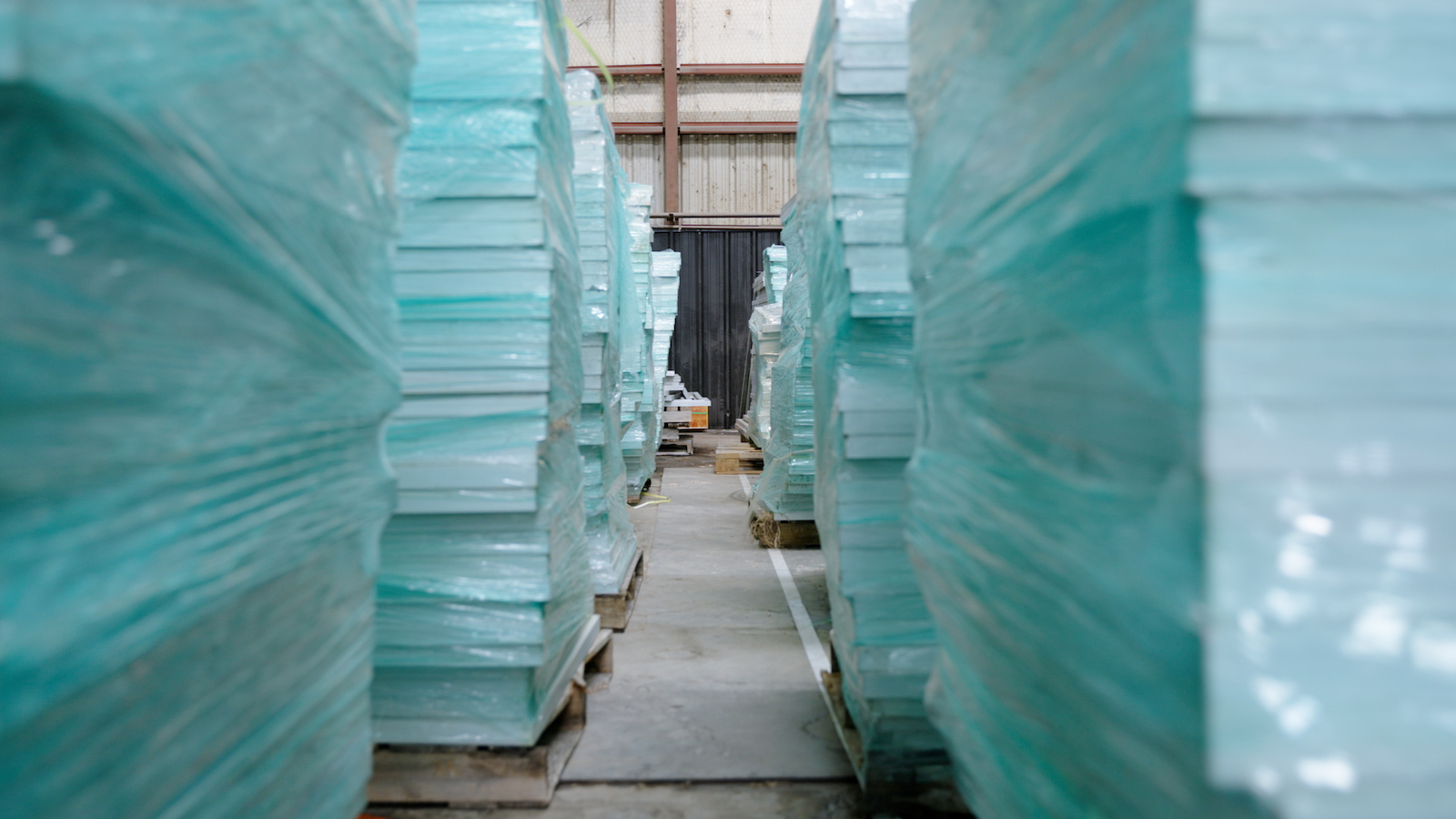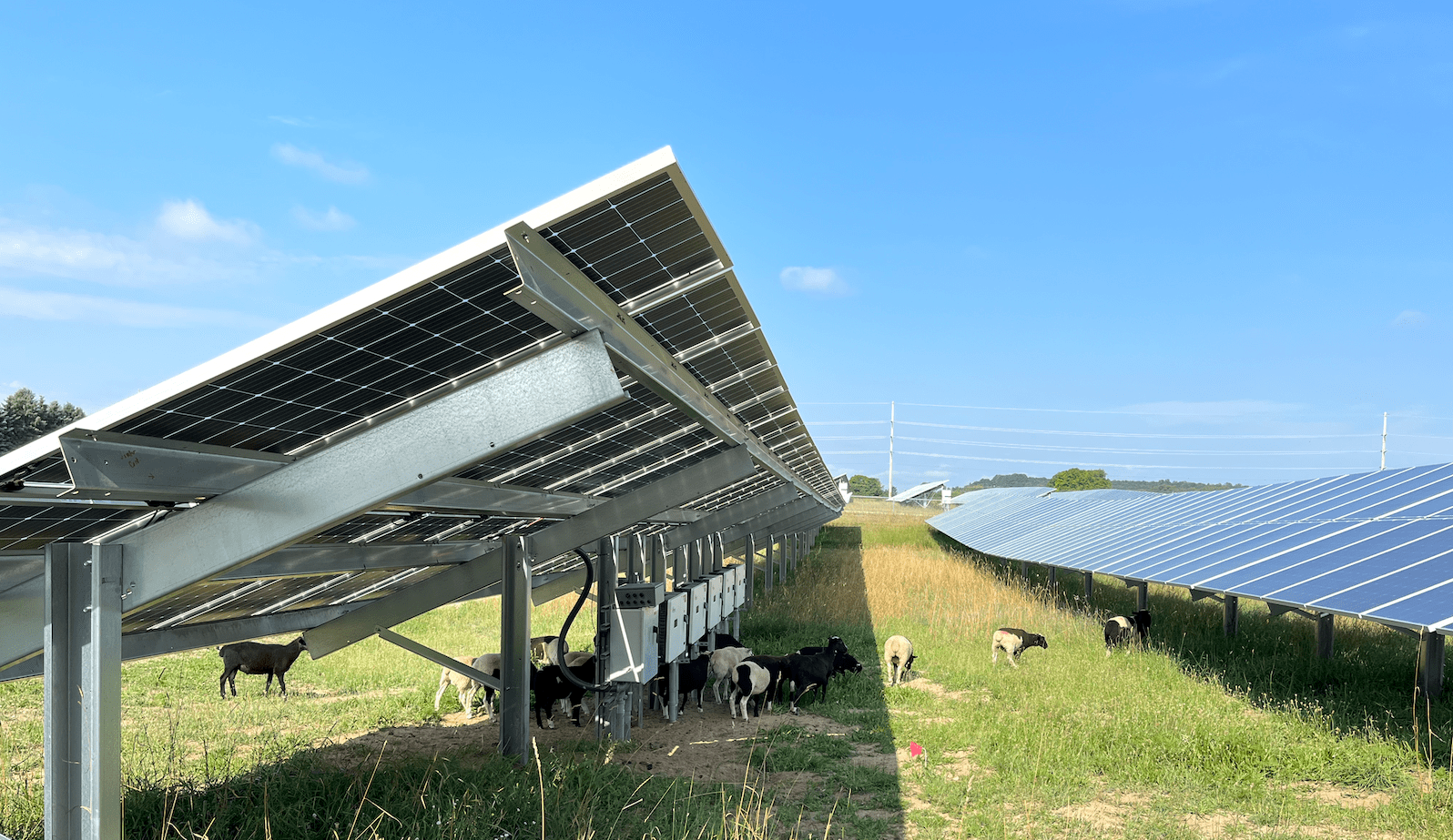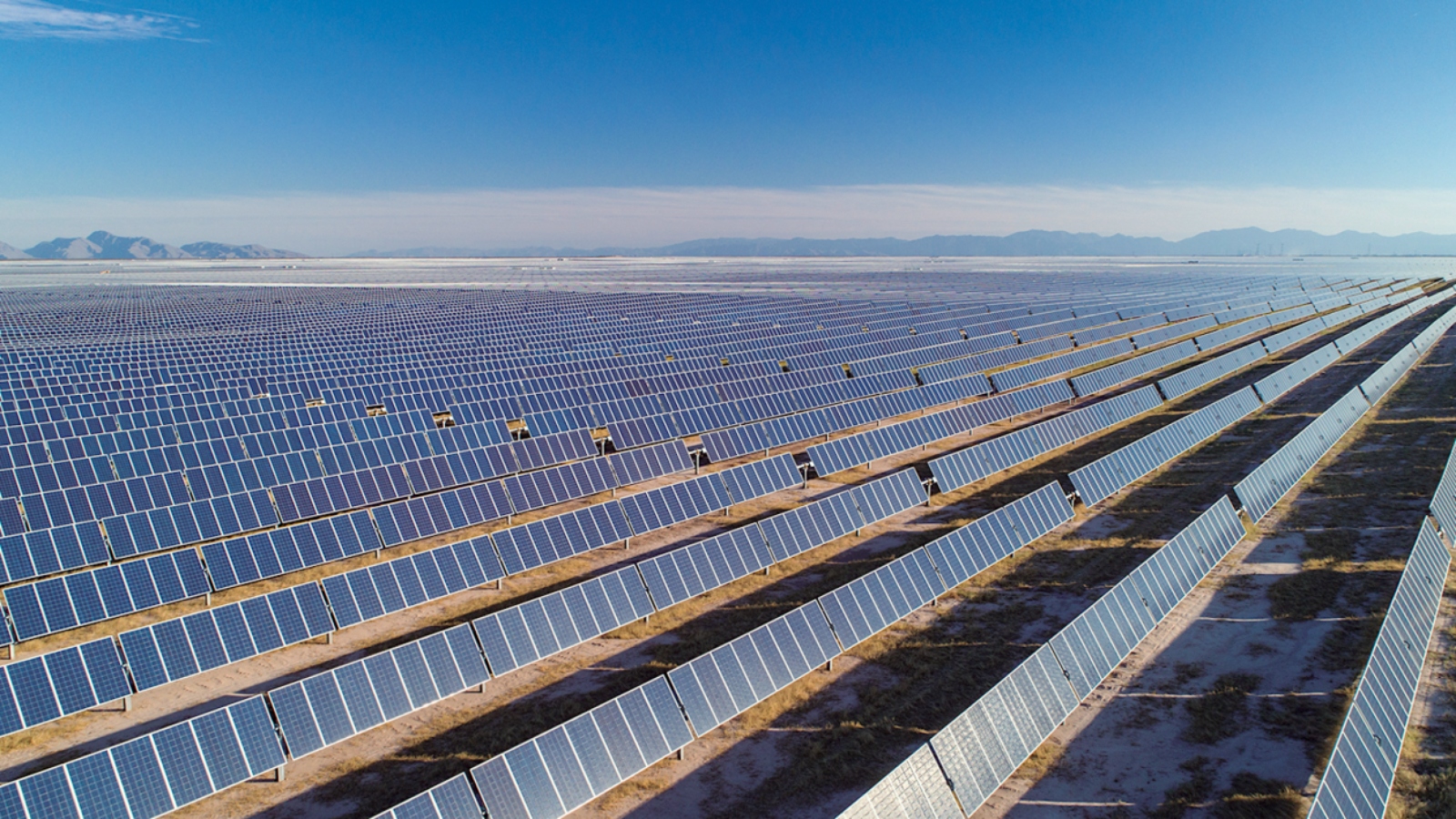This coverage is made possible through a partnership with Grist and Interlochen Public Radio in Northern Michigan.
In 2019, the nonprofit Michigan Energy Options had just put up a solar farm in the city of East Lansing — in a dump.
“It was a closed dump,” said John Kinch, the solar company’s executive director. “There was grass and some flowers and weeds growing there. “
As part of the project, Kinch and his colleagues restored the land around the newly installed panels.
“We took all the junky grasses and things that were not native, got rid of it all and planted all native prairie and wildflower species to Michigan,” he said. “It’s a beautiful sight right now.”
But one day, Kinch was out there admiring the work, when a thought entered his mind: “Holy cow, when we’re done with this project, am I going to remove a thousand solar panels from a landfill and go put them underground in a landfill somewhere else?”
The world is seeing a huge push for solar power. But what happens when those panels wear out?
About 12 years ago, a woman named Annick Anctil was working at the Brookhaven National Laboratory in New York. She was researching the environmental impact of solar, and she became interested in making this renewable energy more sustainable.
At her next job, she decided to go further: “The first thing I did when I started in academia after my postdoc was to write a proposal about looking at the end of life of solar modules and the need for recycling and sustainability.”
But, she said, other people weren’t on board.
“The response to that proposal was just, ‘Well, that’s not a problem. And it’s not going to be a problem for a long time. So we’re not going to fund that,’” she recalled.
Anctil submitted another proposal a few years later, and was rejected again.
Around that same time, interest in solar waste was starting to pick up. The country was installing panels at record rates. And in 2016, the International Renewable Energy Agency released a big report, saying that in the next few decades the world could see up to 78 million metric tons of solar waste. To put that in perspective, that’s about 5 million school buses.
That estimate has fluctuated over the years as solar has advanced. The National Renewable Energy Laboratory now estimates waste could reach between 54 and 160 million metric tons.
By 2021, Anctil’s research was finally funded. And she’s been working on that ever since as an associate professor of civil and environmental engineering at Michigan State University.
“Looking at the waste part, for me, that’s part of the full life cycle of the solar panels,” she said. “As soon as we start thinking about a product, we should think about what’s going to happen to them when we’re done with it.”

To understand solar recycling, it’s helpful to know where the panels begin.
Most solar panels are made in China. Those blue rectangles that convert sunlight to electricity are covered in big sheets of high-quality glass and plastic polymer. Those rectangles are usually made of silicon, which is basically a pure form of sand. Panels can also contain copper, silver and other metals. An aluminum frame holds it together.
The solar life cycle is intertwined with human rights. There have been charges of abuses in mining and manufacturing for solar that gets shipped to countries including the United States. And a report by the London-based Business and Human Rights Resource Centre said the U.S. is among the countries that have failed to provide environmental and labor safeguards for the workers doing the mining, allegedly leading to a slew of violations, like polluting drinking water.
Last year, Reuters reported that U.S. Customs and Border Patrol had seized solar equipment shipments because of concerns about ties to slave labor in Uyghur detention camps in northern China.
“There’s a lot of illegal mining,” said Anctil, who co-authored a Science Direct report on the carbon footprint of silicon production last year. “There’s also concern that some country might import high quality sand from another country using illegal mining.”
Most solar has been installed in the last decade, and that pace is expected to continue, as it becomes cheaper due to federal incentives, new technology and higher demand. Many of those panels are meant to last for at least 25 to 30 years, and could produce power for much longer. Eventually, that will pile up and we’ll need to dispose of them.
But there are no federal requirements for recycling solar panels, and states have different regulations for what to do with them. Panels can also contain small amounts of heavy metals like lead, which makes getting rid of them more complicated. The vast majority of panels are thrown away in landfills — only about 10 percent are recycled. And people who are recycling are dealing with a patchwork system with a lot of organizations.
Solar recycling companies are part of that configuration. Some are in the Great Lakes region, but panels are also shipped to big facilities thousands of miles away.
Jesse Simons helped found the California recycling company Solarcycle last year, and is the company’s chief commercial officer. He said the first step is sending out a team to determine whether panels can be reused instead of recycled at their facility in Texas.
Once the panels arrive at the facility, they’re put on a machine.
“A robot, essentially, pops the frame off,” Simons said.
Panels are hard to take apart. They’re fused together in a kind of sandwich of glass, silicon, and plastic polymer, built to withstand decades outdoors, and specialized recycling systems are needed to recover valuable materials.
Once the glass is removed, there’s the laminate.
“It really does, at that point, roll up like a yoga mat,” Simons said. “It’s like a very thin piece. But that’s where most of the value is currently. Something like 80 percent of the value of the panel is now in the 8 percent of the weight that is in that yoga mat-like laminate.”
They put the laminate in a shredder, where it’s ground down to the size of sand.
“Then we’ve got another machine that basically uses electromagnetic processes to separate the valuable metals from the remaining plastic and glass,” he said.
At the end of the whole process, they’re left with around five pounds of plastic, which they’re trying to find a way to reuse.
So why isn’t everyone recycling?
Well, it’s still expensive. The National Renewable Energy Laboratory estimates that it can cost between $15 to $45 to recycle a panel, but just a few dollars to throw it away.
Getting panels to recycling facilities is another factor. The company We Recycle Solar actually has regional warehouses in places like Chicago, where they store panels until there are enough to justify shipping them to their center in Arizona.
The solar recycling industry is expected to grow as technology improves, waste accumulates and demand for materials goes up. And people like John Gilkeson, from Minnesota’s Pollution Control Agency, say this transition can’t be left to the free market and industry alone.
“That’s called wish-cycling,” he said. “Because the market will drive to the cheapest option, which is going to be landfilling. We have had many conversations with larger energy providers who say, ‘We’ll do the right thing.’ And we say, ‘What is the right thing? And when it really happens, will you do it?’ And then we get no response. Because people are not going to do anything that they do not have to do.”
Gilkeson said policy is key to dealing with any kind of waste, including solar. He’d like to see reuse and recycling take-back programs that are funded ahead of time and supported by the industry, along with federal efforts. And he thinks we should start working on that now.
“Deliberate, intentional action is needed to make this happen,” he said. “Otherwise, you’ve got thousands of actors all doing whatever they think is in their own self-interest. And it’s not going to be a coordinated reuse and recycling system.”
There are efforts out there to make reuse and recycling more feasible.
The U.S. Department of Energy announced $20 million for solar sustainability this year. Washington State passed a law requiring company take-back and recycling programs that’s set to take effect in 2025. Some states have included solar in their universal waste programs, which can help streamline collection and recycling. Illinois could ban panels from being thrown away. Some companies, like Michigan Energy Options, have started collecting panels in the Great Lakes to test out reuse and recycling in the region.
One of the best ways to reduce waste is by developing panels that last longer and are more reliable, say researchers at the National Renewable Energy Laboratory or NREL. They also said it’s important to try reusing and repairing panels before recycling them.
Worries about solar power — both the recycling issues and the potential toxins — are influencing efforts to cut carbon emissions, according to a recent article in the journal Nature Physics. There, NREL researchers like Silvana Ovaitt said “unfounded” concerns about waste and toxicity are slowing solar installations.
“There is a need to grow recycling and management practices, but it’s also not the most important thing to do right now,” Ovaitt said. “We are really facing these decarbonization needs; right now what we should really focus on is quick deployment.”
Over its lifetime, solar generally produces far fewer emissions than non-renewable energy — a 2021 NREL assessment found that solar emissions are about 4 percent of coal, 5 percent of oil, and 9 percent of natural gas. And although the projected amount of solar waste internationally may seem like a lot, it’s still much less than the amount of trash we throw out globally every year.
Annick Anctil, the professor at Michigan State, thinks now is actually a great time to figure out how to move forward. She said the main reason to keep working on this is simple.
Solar is great, she said, but what if the industry created a new design that didn’t end up in landfills? Or didn’t need so much mining for materials? Or could end up recycled as new panels?
“We could do better,” she said.





